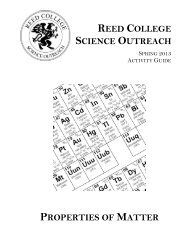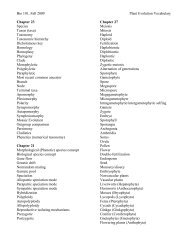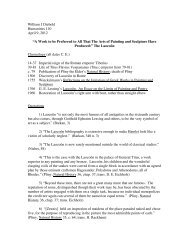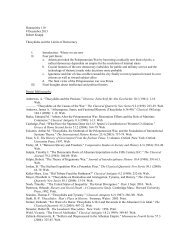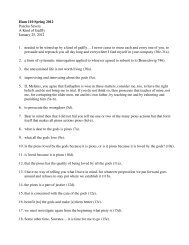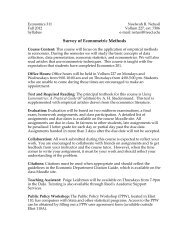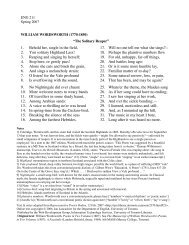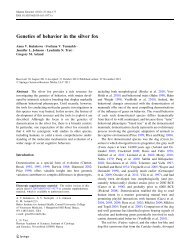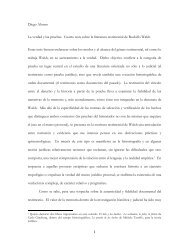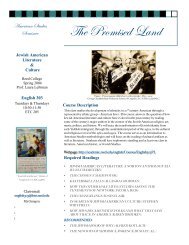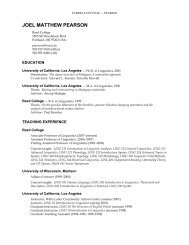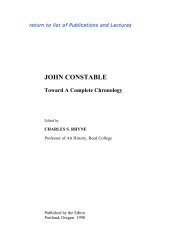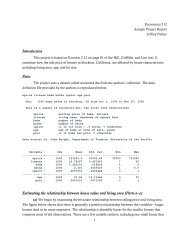Graphic and Photographic Documentation - Reed College
Graphic and Photographic Documentation - Reed College
Graphic and Photographic Documentation - Reed College
Create successful ePaper yourself
Turn your PDF publications into a flip-book with our unique Google optimized e-Paper software.
<strong>and</strong> art history. After a list of the factors that affect what is <strong>and</strong> what is not recorded in<br />
any image, the authors write:<br />
“Above all, the underlying rationale for the image, its commissioning, function, <strong>and</strong><br />
intended audience will all determine the limits of what it once meant <strong>and</strong> what it may<br />
mean now. These conventions need to be understood if the imaging of archaeological<br />
knowledge is to be properly considered, <strong>and</strong> they apply with equal force to all<br />
categories of its visual representation.” (pp.1-2).<br />
They correctly note that “art history, for all its sophistication as a means of<br />
investigating visual culture, has not made any sustained effort to consider the<br />
importance of images to archaeology . . . . The characteristic reference points for<br />
each discipline do not share much common ground” (p.3).<br />
N<br />
Norfolk, Simon<br />
“Built to Awe: Mesoamerica’s Gr<strong>and</strong> Monuments.” National Geographic, Vol. 212, No. 2<br />
(August 2007), 86-95, <strong>and</strong> fold-out photo on pp. 68-69, <strong>and</strong> “On Assisgnment: Shedding<br />
Light on the Subject”, p. 154.<br />
For a Society that, in the past, has funded highly informative color reconstructions of<br />
Maya architecture <strong>and</strong> sculpture, it is difficult to know what was intended by these<br />
photographs that approximate most closely son et lumière performances. One<br />
photograph of the night sky above the Pyramid of the Magician, taken as a time<br />
exposure showing the paths of several stars, suggests the Maya devotion to the<br />
heavens <strong>and</strong> their careful observation of the stars <strong>and</strong> planets. The other<br />
photographs, taken at night by powerful flood lights hidden behind walls <strong>and</strong> in rooms,<br />
do not approximate the way these monuments look today or at any time in the past,<br />
nor do they help us in anyway to underst<strong>and</strong> the Maya.<br />
Norman, B. M.<br />
Rambles in Yucatan including A Visit to the Remarkable Ruins of Chi-Chen, Kabah, Zayi,<br />
Uxmal &c. New York: J. & H. G. Langley, 1843.<br />
Various images from this volume are reproduced on this web site.<br />
http://academic.reed.edu/uxmal/galleries/thumbnails/drawings/Drawings-Norman.htm<br />
publications. The frontispiece, is given the caption ”Moon Light Uxmal Ruins”, but only<br />
with considerable effort can one see that it is intended to suggest a view of the major<br />
structures looking north from behind the Pyramid of the Old Woman. There are 4<br />
prints of Uxmal, 1 of Sayil, <strong>and</strong> 1 of a local Indian house, none of which could serve as<br />
evidence. All prints are identified as drawn by the author. There is a schematic “Plan<br />
of the Ruins of Uxmal” <strong>and</strong> a map of the Yucatan “Shewing the geographical position<br />
of the Ruins”, which is more accurate than any of the author’s drawings.<br />
42



